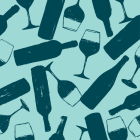Bidding begins at Sotheby’s first French auction
Auction house Sotheby’s has opened bidding on its inaugural wine sale in France, featuring an impressive collection from the prestigious Domaine de la Romanee-Conti.
The collection, acquired directly from the domaine on its release, comprises 25 lots spanning vintages from 1998 to 2011. The sale is expected to achieve between €685,000 and €906,000 in total.
Highlights include: a Methuselah of Romanee-Conti 2000 (estimated at €140,000-€180,000); three bottles of Romanee-Conti 2010 (€40,000-€55,000); and two assortment 12-bottle cases of the 1998 Domaine de la Romanee-Conti.
Speaking about the company’s move into France, Amayes Aouli, Sotheby’s Wine head of auction sales for Continental Europe, said: “This move into a fourth major international hub with France joining London, New York and Hong Kong will allow us to provide our clients with the greatest access to the global market, and an opportunity to acquire the rarest bottles.”
Bidding on the sale closes and the final auction takes place on 2 November.
La Place’s first Rioja sells out in hours
The entire 2017 vintage of Yjar, the first Rioja to be offered via La Place de Bordeaux, sold out within hours of going on sale, according to winemaker Telmo Rodriguez.
Speaking to the drinks business, Rodriguez said that demand for the 7,000 available bottles was “amazing”, and that it was “dramatic trying to manage it” when it went on sale on 16 September.
Released at €58 per bottle ex-negociant, the wine is being offered internationally for £924 per 12-bottle case.
“When it came to the price I didn’t want to price it too cheap as it wouldn’t have been considered an important wine, but I also want people to drink it. La Place is an amazing loud speaker for great wines,” Rodriguez added.
Buzz around the wine on La Place was fuelled by strong reviews from Bordeaux critic Jane Anson and Luis Gutierrez of The Wine Advocate, with Anson describing Yjar as “a cult wine in the making” and awarding it 98 points.
Entire vintage to be traded by NFT in world-first
Australian winemaker Dave Powell – the force behind two internationally-acclaimed Barossa Valley wines – has become the first vintner ever to sell an entire vintage by non-fungible token (NFT).
Just 100 barrels of Powell’s 2021 single vineyard wine – recently rebranded under the Nelder Road label – will be available on NFT marketplace OpenSea. Each NFT gives buyers ownership of a specific barrel, as well as access to one-of-a-kind experiences such as dinner with Powell himself, and personalised wine bottles. Some barrels will also come with a corresponding hologram.
“I’ve always liked to try new things and when I found out about NFTs, it seemed to fit,” said Powell. “This reminds me of how wines are sold in Bordeaux through their En Primeur system. Like the more ‘traditional’ NFT products, our wine is rare – just 100 barrels; it’s unique – every vintage is different; and it’s the original collectible – the oldest personal wine collection dates back nearly 4,000 years.”
Powell added that the 2021 Barossa vintage has been tipped as the best in “living memory”.
“I’ve waited more than four decades to be in the right place at the right time,” he said. “I feel extraordinarily privileged to have secured the very best grapes from some of the most exceptional vineyards in the Barossa. The climatic conditions that led up to this vintage will never be repeated – I think these wines may well be the best I ever make.”
Californian vineyards use owls to protect vines
Winemakers in California’s Napa Valley are using nesting barn owls as pest control in a bid to reduce their use of chemicals and pesticides.
As reported by Bay Nature magazine, scientists have already begun to study the strategy, with results proving ‘encouraging’.
Matt Johnson, a wildlife professor at Humboldt State, revealed that one of his surveys found that out of 75 California wine makers, four-fifths of them purposely invite owls onto their property by constructing nest boxes.
Barn owls are capable of eating up to 3,400 rodents each every year. According to California ornithologist John Robinson: “You can literally put a barn owl nest box in the exact location where you think you have a problem with the small mammals, and voilà! The owls will start using that area.”
The move reflects a state-wide trend towards chemical-free farming. As reported by non-profit organisation Napa Green, the volume of organic vineyard in Napa Valley has doubled in the last decade.






